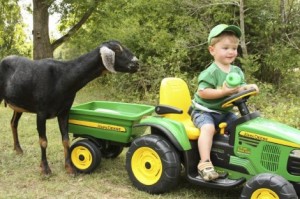 Recycling old railroad ties to use in the ranch or vineyard can be a low-cost option for erosion control, retaining walls, stairs, fences, driveways, decorative borders, and more. Especially when paint or tile is added to the surface, railroad ties can easily transform into a highly-aesthetic addition to your design scheme.
Recycling old railroad ties to use in the ranch or vineyard can be a low-cost option for erosion control, retaining walls, stairs, fences, driveways, decorative borders, and more. Especially when paint or tile is added to the surface, railroad ties can easily transform into a highly-aesthetic addition to your design scheme.
A word of caution: The wood that composes old railroad ties is most often treated with a chemical called creosote. Creosote is used to protect wood from the harsh elements of nature and the brute forces of trains passing over.
According to the United States Environmental Protection Agency, creosote is “used as a fungicide, insecticide, miticide, and sporicide to protect wood and is applied by pressure methods to wood products, primarily utility poles and railroad ties. … Creosote is a possible human carcinogen and has no registered residential uses.”
If you’re unsure whether or not your railroad ties contain creosote, then it is best to play it safe. This means always wear gloves when handling them; do not utilize them in or around vegetable gardens, herb gardens, ponds, or other wet areas to avoid contamination; and instruct children not to play on them (to avoid getting creosote on their hands and possibly ingesting it).
Here are a few ideas on how to use railroad ties to enhance the appeal and/or function of your ranch or vineyard:
Apply Paint or Tile for Decoration
If you want to paint your railroad ties to spice them up a bit, then be sure they do not contain creosote (painting on top of creosote usually doesn’t work because the paint cannot adhere to the surface).
The first step to painting a railroad tie is to clean it thoroughly. Once it dries, use spray paint or a paint brush to evenly coat the railroad tie (you can spice up the colors by using stencils or patterns, too). When the painting is complete, apply a coat of sealant to protect it.
If you want to use tiles instead of paint, be sure to apply wood filler and/or leveling compound to the holes and cracks to smooth the surface. You’ll then need to sand the entire railroad tie before securing the tiles to it.
Create a Retaining Wall / Prevent Erosion
Erosion can become a major issue when ignored. Pesticides and fertilizers can drift into water supplies, sediment can enter watersheds and harm certain fish, areas once good for gardening can become too sloped to be useful, and more problems can arise. A good retaining wall will improve drainage and properly direct water flow.
Basically, building a retaining wall begins with a trench. A sledgehammer and railroad spikes can be used to secure the new wall in place, and plastic landscaping fabric may help to prevent creosote from entering into the surrounding soil.
Other Ideas
You can also utilize railroad ties by making a border or a walkway, outlining a driveway, constructing outdoor steps, and stacking them to create a fence.

 Two thousand thirteen marks the 12th year in which the
Two thousand thirteen marks the 12th year in which the 

